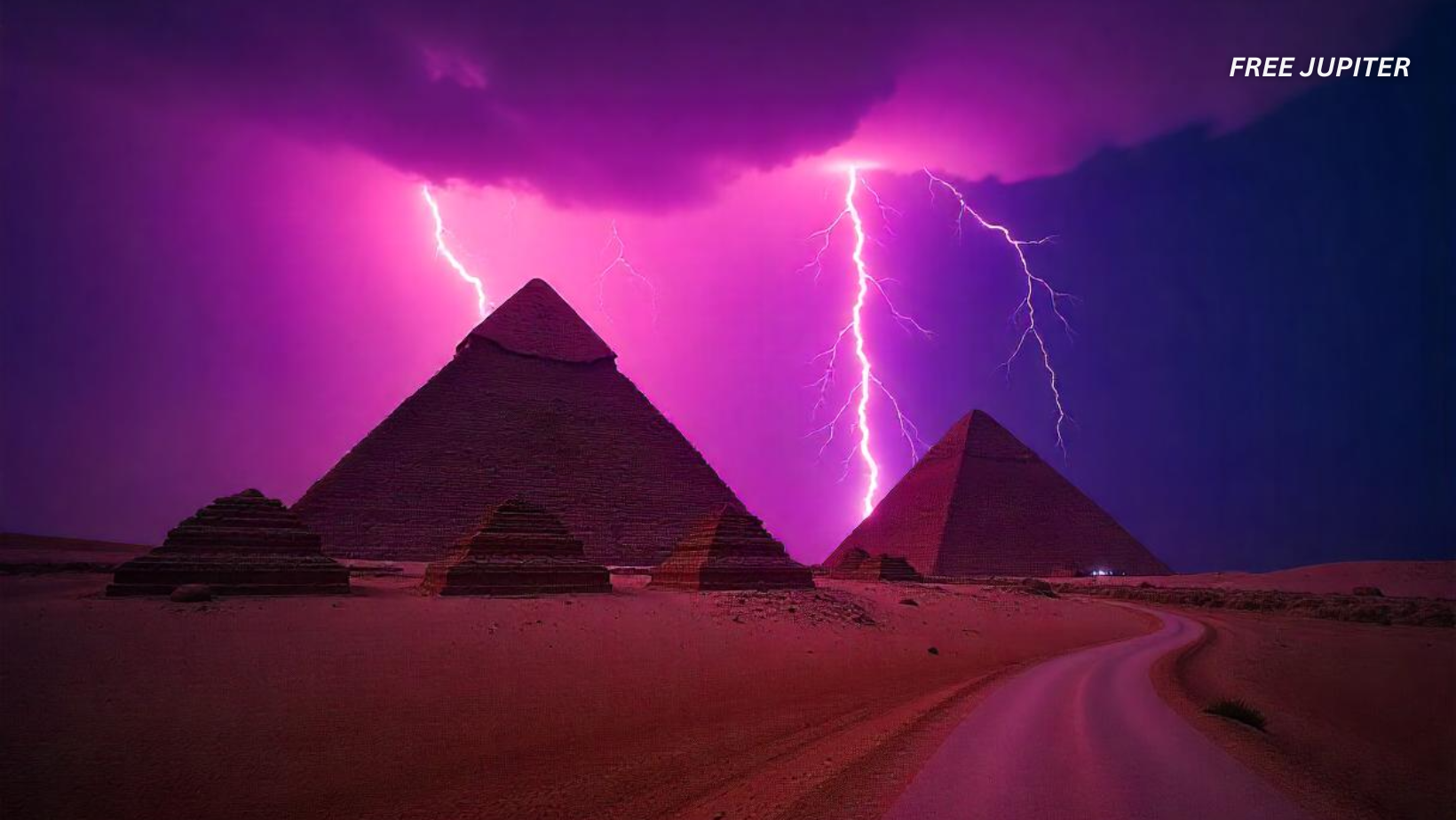For centuries, the ancient pyramids have been revered as monumental tombs for pharaohs, symbols of power, and gateways to the afterlife. However, emerging research suggests that these awe-inspiring structures may have had a much more sophisticated function beyond mere burial sites. Some experts propose that the pyramids were designed with an advanced purpose—one that involved energy generation and storage.
The theory that the pyramids served as power plants rather than simple tombs has gained traction in recent years. These towering structures exhibit architectural and material properties that hint at their potential use as energy conductors. The Great Pyramid of Giza, in particular, has captured the attention of scientists and researchers who have observed its unique ability to interact with electromagnetic forces.
Unlike other ancient tombs filled with hieroglyphs and intricate decorations dedicated to the afterlife, the Great Pyramid is starkly devoid of any such markings. This anomaly raises questions about whether its purpose was something entirely different from what traditional Egyptology suggests. Could it be that the ancient Egyptians possessed knowledge of energy transmission, resonance, or even wireless power long before modern civilization?
Adding to the mystery, the materials used in pyramid construction appear to support the idea of energy conduction. The limestone casing stones, which once covered the Great Pyramid, had insulating properties, while the granite blocks inside contain high levels of quartz, known for its piezoelectric capabilities. When subjected to mechanical stress, quartz generates an electrical charge, further supporting the notion that the pyramids might have harnessed and stored energy.
Read more: Scientists Are Investigating Puzzling Underground ‘Anomaly’ Near the Giza Pyramids
Electromagnetic Energy Within the Pyramids
Recent experiments conducted at the Great Pyramid of Giza have revealed something intriguing. Researchers sent electromagnetic waves into the pyramid, only to find that these waves were absorbed and concentrated in specific areas—primarily the King’s and Queen’s Chambers. This unexpected discovery has led to the idea that the pyramids were intentionally designed as energy storage facilities.
Aerospace Engineer Christopher Dunn’s Perspective
Aerospace engineer Christopher Dunn, who has studied ancient structures for decades, has been one of the leading voices behind this theory. In a conversation with Joe Rogan, he elaborated on how the Egyptians might have utilized the pyramids for energy production.
“One of the ideas in the Giza power plant theory is that two specific chemicals were introduced into the chamber. When mixed, they would react and release hydrogen gas. The entire structure seems to have been built with a practical function in mind,” Dunn explained.
He further emphasized that every architectural element of the pyramid was meticulously crafted, possibly to serve a distinct purpose. This suggests that the ancient builders had a far more sophisticated understanding of energy than previously thought.
Read more: Pythagorean Theorem Found on Ancient Tablet 1,000 Years Older Than Pythagoras Himself
The Power Plant Hypothesis Gains Momentum
The idea that pyramids were power plants is not entirely new, but it continues to gain traction as more evidence emerges. Some researchers believe that the pyramids’ internal design and precise alignments may have played a role in harnessing natural energy sources. Theories suggest that these massive structures could have functioned like a giant resonator, amplifying and transmitting energy.
Interestingly, the layout of the Great Pyramid appears to follow principles found in modern energy systems. The intricate passageways and chambers may have been deliberately positioned to facilitate energy movement. Some have even drawn comparisons between the pyramid’s design and Nikola Tesla’s wireless energy transmission concepts.
Architectural Features and Energy Storage
Dunn and others point to the fact that no hieroglyphs or carvings inside the Great Pyramid indicate it was meant as a tomb. Unlike other Egyptian tombs, which contain elaborate decorations and inscriptions detailing the afterlife, the Great Pyramid remains starkly devoid of such markings. This absence fuels speculation that the structure’s true purpose was far different from what mainstream archaeology has long assumed.
Furthermore, the materials used in the pyramid’s construction add another layer to the mystery. The limestone casing stones that once covered the pyramid had insulating properties, while the granite found in the King’s Chamber contains a high concentration of quartz—known for its ability to generate an electrical charge under pressure. These features hint at the possibility that the pyramid was engineered to channel and store energy.
A Lost Advanced Technology?
One of the most compelling aspects of the power plant theory is its connection to the idea of ancient civilizations possessing advanced scientific knowledge. Some researchers argue that the builders of the pyramids may have had access to a form of technology lost to history. The precision with which these massive structures were built suggests an understanding of engineering principles that rival or even surpass modern capabilities.
Although mainstream Egyptologists remain skeptical of the power plant theory, the evidence continues to spark debate. Traditional explanations maintain that the pyramids were solely constructed as elaborate tombs, yet the absence of mummies or funerary artifacts inside the Great Pyramid challenges this assumption.
Global Connections Between Pyramids
Additionally, alternative researchers highlight the global connections between pyramid-like structures found in different parts of the world. From Mesoamerican pyramids to those in China, similarities in design hint at a possible shared knowledge of energy manipulation across ancient cultures. Could it be that these civilizations were tapping into a universal energy source?
Critics argue that the power plant theory lacks definitive proof. While the electromagnetic properties of the Great Pyramid are intriguing, no ancient texts explicitly describe the structure as an energy generator. However, proponents of the theory counter that much of Egypt’s history remains undiscovered or misinterpreted. They point out that many scientific breakthroughs were once dismissed before later being accepted as fact.
Read more: Rabbit Hole in Farmer’s Field Leads To ‘Mystery Caves’ Used By The Knights Templar
Conclusion: A Mystery Yet to Be Solved
Whether or not the pyramids were intentionally designed as energy centers, their construction remains one of the greatest engineering marvels of human history. The level of precision seen in their alignment with celestial bodies, their massive scale, and the advanced knowledge required to build them continue to puzzle experts.
Theories regarding their purpose continue to evolve, with new discoveries adding to the debate. Some believe that future archaeological findings could provide concrete proof of their function as power plants, while others remain convinced that the traditional tomb theory holds firm. Regardless of the ultimate answer, the pyramids stand as a testament to human ingenuity and the mysteries of ancient civilizations.
As scientific techniques advance, researchers may uncover additional clues hidden within the stones of these enigmatic structures. Until then, the Great Pyramid of Giza and others like it remain a source of wonder, inspiring further investigation into the knowledge and capabilities of the ancient world.
Were these colossal monuments truly designed for energy production, or was their function something even more extraordinary? The truth may still be buried beneath the sands of time, waiting for the right discovery to bring it to light.










